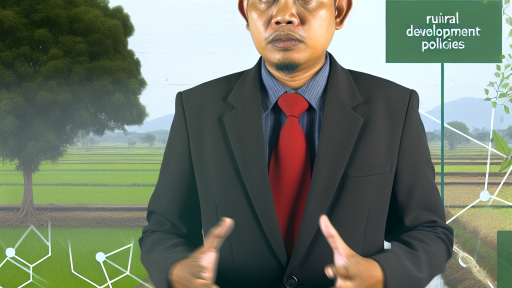Introduction to Pesticide Safety Regulations
Pesticide safety regulations protect public health and the environment.
Governments worldwide enforce these regulations diligently.
They aim to mitigate risks associated with pesticide use.
Understanding these regulations is essential for users and manufacturers.
The regulations vary by country, reflecting local conditions and needs.
Importance of Compliance
Compliance with pesticide regulations ensures safe agricultural practices.
It also helps maintain consumer confidence in food safety.
Farmers and manufacturers face legal consequences for violations.
Thus, adhering to these laws is both a legal and ethical obligation.
Key Regulatory Bodies
Various organizations govern pesticide safety regulations.
The Environmental Protection Agency (EPA) oversees regulations in the United States.
Each country has its own authoritative body for pesticide management.
These agencies assess the risks and benefits of each pesticide product.
Categories of Pesticide Regulations
Pesticide safety regulations typically fall into several categories.
- Registration of pesticide products.
- Labeling requirements.
- Application guidelines and safety measures.
Each category plays a vital role in ensuring safe usage.
Transform Your Agribusiness
Unlock your farm's potential with expert advice tailored to your needs. Get actionable steps that drive real results.
Get StartedRegistration of Pesticide Products
Registration is crucial before a pesticide can be sold or used.
Manufacturers must provide data on safety and efficacy.
This process involves thorough scientific evaluation.
Only products that meet safety standards receive approval.
Labeling Requirements
Pesticide labels contain essential information for users.
Labels must include active ingredients and safety precautions.
They provide instructions for proper application and disposal.
Reading and understanding labels is vital for all users.
Application Guidelines and Safety Measures
Application guidelines ensure effective and safe pesticide use.
These guidelines specify recommended methods and equipment.
Safety measures minimize risks to applicators and bystanders.
Training and education in pesticide application are often required.
Monitoring and Enforcement
Monitoring plays a key role in enforcing pesticide regulations.
Agencies conduct inspections and investigations to ensure compliance.
Violations may result in penalties or product bans.
These measures help maintain a safe agricultural environment.
Overview of Pesticides: Types and Uses
Pesticides play a crucial role in modern agriculture.
They help control pests, diseases, and weeds that threaten crops.
Various types of pesticides exist, each designed for specific purposes.
Types of Pesticides
Insecticides target harmful insects that damage plants.
Herbicides control unwanted weeds that compete with crops.
Fungicides prevent and treat fungal infections in plants.
Rodenticides manage populations of rodents that may damage crops.
Bactericides eliminate harmful bacteria affecting plants.
Showcase Your Farming Business
Publish your professional farming services profile on our blog for a one-time fee of $200 and reach a dedicated audience of farmers and agribusiness owners.
Publish Your ProfileUses of Pesticides
Pesticides are widely used in agriculture to enhance crop yield.
Farmers apply them to protect against pest invasions.
They also prevent diseases that can severely affect plant health.
Pesticides contribute to food security by minimizing crop loss.
Moreover, they aid in maintaining the quality of produce.
Environmental Considerations
While pesticides offer benefits, their use raises environmental concerns.
Improper application can harm beneficial insects and wildlife.
Water contamination is another significant risk associated with pesticides.
Consequently, regulations guide their use to mitigate these impacts.
Regulatory Framework
Pesticides are subject to stringent regulations in many countries.
These regulations ensure their safe and effective use.
Government agencies evaluate pesticide safety before approval.
With that, they monitor ongoing use to protect health and the environment.
Regulatory Bodies Overseeing Pesticide Safety
Environmental Protection Agency
The Environmental Protection Agency (EPA) plays a crucial role in pesticide regulation.
It assesses the safety of new pesticides before they enter the market.
Additionally, the EPA oversees the registration process for pesticide products.
It ensures that these products comply with the Federal Insecticide, Fungicide, and Rodenticide Act.
The EPA also conducts periodic reviews of registered pesticides.
These reviews focus on their safety for human health and the environment.
U.S. Department of Agriculture
The U.S. Department of Agriculture (USDA) collaborates with the EPA in pesticide safety efforts.
It conducts research to inform pesticide safety standards.
The USDA also provides education and resources to farmers.
This helps them understand how to use pesticides safely and effectively.
State Regulatory Agencies
Various state regulatory agencies enforce pesticide laws at the state level.
Each state has its own set of regulations that align with federal laws.
State agencies often handle the licensing and training of pesticide applicators.
These agencies also investigate pesticide misuse and complaints.
International Regulatory Bodies
International organizations also influence pesticide safety regulations.
The Food and Agriculture Organization (FAO) provides guidelines for pesticide use.
Moreover, the World Health Organization (WHO) evaluates the health impacts of pesticides.
These organizations promote harmonization of standards across countries.
Industry and Trade Associations
Industry groups like the American Crop Protection Association play a supportive role.
They advocate for responsible pesticide use and safety practices.
Trade associations also contribute to research funding for safer pesticide alternatives.
Public Involvement and Advocacy Groups
Public involvement is essential in pesticide safety discussions.
Advocacy groups raise awareness about pesticide risks and best practices.
They work towards influencing policy changes regarding pesticide regulations.
Engaging communities helps ensure safer agricultural practices.
Discover More: The Importance of R&D Funding in Enhancing Sustainable Farming Practices
Key Regulations and Standards: National and International
Overview of Pesticide Regulations
Pesticide regulations ensure safe use and application of chemicals.
Showcase Your Farming Business
Publish your professional farming services profile on our blog for a one-time fee of $200 and reach a dedicated audience of farmers and agribusiness owners.
Publish Your ProfileThese regulations protect human health and the environment.
Both national and international standards govern pesticide use.
National Regulations
In the United States, the Environmental Protection Agency (EPA) oversees pesticide regulations.
The Federal Insecticide, Fungicide, and Rodenticide Act (FIFRA) is a key legislation.
This act monitors the registration and labeling of pesticides.
States also implement their own regulations to address local concerns.
For instance, California has stricter laws regarding pesticide use.
Registration Process
All pesticides must undergo a thorough registration process.
This process evaluates safety and efficacy before approval.
Manufacturers must submit extensive data to support their applications.
Labeling Requirements
Pesticide labels must include critical safety information.
Labels inform users about application rates and safety precautions.
Furthermore, labels provide instructions for handling spills and accidents.
International Standards
Internationally, the World Health Organization (WHO) plays an essential role in pesticide regulation.
The Food and Agriculture Organization (FAO) also contributes through guidelines.
These organizations promote safe pest management practices worldwide.
Codex Alimentarius
The Codex Alimentarius develops food safety and quality standards.
It includes guidelines on pesticide residues in food products.
Countries use Codex standards to govern their national regulations.
Montreal Protocol
The Montreal Protocol aims to protect the ozone layer.
This agreement phases out substances that deplete the ozone layer, including some pesticides.
Compliance with this protocol is vital for global environmental protection.
National and International Pesticide Regulations
National and international pesticide regulations play a crucial role.
They enhance food safety and promote environmental health.
Staying informed about these regulations helps ensure compliance.
Delve into the Subject: Renewable Energy Incentives for Agriculture
Labeling Requirements and Importance for Safety
Understanding Labeling Requirements
Pesticide labels contain essential information regarding product use.
These labels inform users about appropriate application rates.
Additionally, they specify target pests and recommended safety precautions.
Understanding label requirements helps ensure proper pesticide application.
This knowledge also reduces risks to human health and the environment.
The Importance of Clear Communication
Clear labeling promotes effective and safe pesticide use.
It prevents misuse that could lead to adverse effects.
Furthermore, accurate labels help maintain compliance with regulations.
Compliance ensures that pesticides are applied safely and responsibly.
Key Labeling Components
Labels must include several vital components.
- Product name and active ingredients.
- Precautionary statements and hazard warnings.
- Instructions for use, including dilution ratios.
- Storage and disposal guidelines.
Each component plays a crucial role in safe pesticide handling.
Regulatory Oversight and Standards
Government agencies enforce strict labeling regulations.
The Environmental Protection Agency oversees pesticide labels in the U.S.
Compliance with these standards protects human health and the environment.
Showcase Your Farming Business
Publish your professional farming services profile on our blog for a one-time fee of $200 and reach a dedicated audience of farmers and agribusiness owners.
Publish Your ProfileCompanies must ensure labels are clear and comprehensive before product distribution.
Training and Education
Proper training enhances understanding of pesticide labels.
Education programs can help users learn how to read and interpret labels effectively.
Employers should provide training for all personnel handling pesticides.
This training reduces the likelihood of accidents and misuse.
The Role of Public Awareness
Public awareness campaigns can promote responsible pesticide use.
These campaigns often emphasize the importance of adhering to labels.
Community outreach fosters a culture of safety and accountability.
Ultimately, informed citizens contribute to safer agricultural practices.
Uncover the Details: Future of Farming Under Climate Change Legislation
Risk Assessment and Management Practices
Understanding Pesticide Risks
Pesticides can pose various risks to human health and the environment.
Assessing these risks is crucial for safe usage.
Evaluating exposure levels helps determine potential harm.
Both acute and chronic effects should be considered.
Conducting Risk Assessments
Conducting a risk assessment involves several key steps.
First, identify the pesticide being assessed.
Next, gather data on its toxicity and environmental impact.
Third, analyze the exposure pathways for humans and wildlife.
Finally, evaluate the potential for adverse effects.
Implementing Risk Management Strategies
Implementing effective risk management is essential.
First, consider applying integrated pest management practices.
This approach reduces reliance on chemical pesticides.
Secondly, provide training for proper application techniques.
Educating users minimizes accidental exposures and misuse.
Establishing Safety Protocols
Establishing safety protocols is vital for protecting users.
Start with developing clear guidelines for application.
Ensure that personal protective equipment is available.
Regularly reviewing and updating safety protocols is necessary.
Monitoring and Evaluating Outcomes
Monitoring pesticide use helps evaluate effectiveness and safety.
Collect data on health incidents related to pesticide exposure.
Use this information to improve future risk assessments.
Consider feedback from pesticide applicators and the community.
Regular evaluations enhance overall safety practices.
Find Out More: How Agricultural Insurance Protects Against Natural Disasters

Best Practices for Safe Handling and Application of Pesticides
Understanding Safety Guidelines
Familiarize yourself with local pesticide regulations.
These guidelines outline safe handling and use practices.
Regular updates ensure compliance with evolving safety standards.
Consult with agricultural extension services for additional resources.
Personal Protective Equipment
Always wear appropriate personal protective equipment, or PPE.
Choose gloves made of chemical-resistant materials.
Showcase Your Farming Business
Publish your professional farming services profile on our blog for a one-time fee of $200 and reach a dedicated audience of farmers and agribusiness owners.
Publish Your ProfileUse goggles or face shields to protect your eyes.
Consider wearing respirators in enclosed areas or high-risk situations.
Proper Storage Techniques
Store pesticides in their original containers with labels intact.
Keep them in a locked area to prevent unauthorized access.
Ensure storage areas are cool and dry, away from sunlight.
Regularly inspect stored products for leaks or damage.
Application Best Practices
Read and follow label instructions when applying pesticides.
Apply during appropriate weather conditions to minimize drift.
Use calibrated equipment to ensure accurate application rates.
Employ buffer zones to protect non-target areas from exposure.
Disposal and Cleanup Procedures
Dispose of empty pesticide containers according to local regulations.
Triple rinse containers before disposal to reduce residue.
Clean application equipment thoroughly after each use.
Follow guidelines for the disposal of pesticides safely.
Emergency Preparedness
Have an emergency plan in place for pesticide exposure incidents.
Train all personnel on the proper response to pesticide spills.
Keep a first aid kit accessible and stocked with necessary supplies.
Regularly review and update your emergency procedures.
Reporting and Investigating Pesticide-Related Incidents
Importance of Reporting
Reporting pesticide-related incidents is crucial for public safety.
It helps authorities track misuse and identify potential hazards.
Timely reporting can prevent further exposure and harm.
Moreover, it contributes to better regulatory measures.
Who Should Report
Anyone can report pesticide incidents, including farmers and consumers.
Healthcare professionals should also report cases of exposure.
Environmental organizations play a vital role in reporting as well.
Steps to Report an Incident
Follow a clear procedure when reporting pesticide incidents.
First, gather all relevant information about the incident.
Document the date, time, and location of the event.
Next, include details about the pesticide involved.
Provide information on any individuals affected by the incident.
Finally, submit the report to the appropriate authority.
Investigating Pesticide-Related Incidents
Investigating pesticide-related incidents requires a systematic approach.
Authorities need to assess the extent of exposure.
Collecting samples from the environment is essential for analysis.
Interviewing affected individuals helps gather additional insights.
Documenting all findings is a critical part of the investigation.
Regulatory Framework for Investigations
Agencies like the Environmental Protection Agency outline investigation protocols.
They provide guidelines for conducting thorough assessments.
Compliance with these guidelines ensures standardization across investigations.
Follow-Up Actions
After an investigation, authorities determine the appropriate follow-up actions.
Showcase Your Farming Business
Publish your professional farming services profile on our blog for a one-time fee of $200 and reach a dedicated audience of farmers and agribusiness owners.
Publish Your ProfileThis may include additional testing or increased monitoring of the area.
Public awareness campaigns can help educate communities about risks.
Furthermore, regulatory changes might be implemented based on findings.
Resources for Reporting
Numerous resources are available to assist individuals in reporting.
Local agricultural offices can provide guidance on procedures.
Online platforms often provide easy reporting options as well.
Additionally, organizations like CropLife America offer support and information.
The Role of Education and Training in Pesticide Safety
Importance of Knowledge
Education plays a critical role in pesticide safety.
It equips individuals with essential information about pesticide use.
Proper education reduces the risk of accidents and misuse.
Furthermore, it helps in understanding the effects of pesticides on health and the environment.
Training Programs and Workshops
Training programs are vital for pesticide applicators.
They provide practical knowledge about safe handling practices.
Workshops often include demonstrations on the proper application of pesticides.
In addition, they cover emergency procedures in case of exposure.
Compliance with Regulations
Education ensures compliance with local and national regulations.
Understanding these regulations helps avoid legal issues.
Moreover, it promotes safe practices among all pesticide users.
Education also emphasizes the importance of record-keeping for pesticide applications.
Target Audiences for Training
Various groups benefit from pesticide safety training.
Pesticide applicators form a primary audience for such programs.
Farmers and agricultural workers also require proper training.
Additionally, educators and safety officers play crucial roles in spreading knowledge.
Long-Term Impact of Education
Investing in education leads to long-term benefits.
It fosters a culture of safety in agricultural practices.
Consequently, communities experience reduced pesticide-related incidents.
Ultimately, educational efforts lead to healthier environments.
Future Trends in Pesticide Regulation and Safety
Shifts Toward Integrated Pest Management
The future of pesticide regulation leans toward integrated pest management (IPM).
This approach combines biological control, habitat manipulation, and resistant varieties.
Farmers will increasingly rely on IPM to reduce pesticide use.
Regulations will support sustainable practices while enhancing safety measures.
Advancements in Technology
Technological innovations will play a crucial role in pesticide regulation.
Research in precision agriculture will enhance application efficiency.
This leads to lower chemical usage and minimizes environmental impact.
Moreover, drones and AI will monitor pest populations more accurately.
Enhanced Data Transparency
Data transparency will become a priority in pesticide regulations.
The public will demand access to pesticide application records.
Increased transparency will improve trust between regulators and consumers.
This also encourages farmers to adopt safer practices.
Global Harmonization of Standards
As pesticide use is a global concern, harmonizing regulations will emerge as a trend.
Showcase Your Farming Business
Publish your professional farming services profile on our blog for a one-time fee of $200 and reach a dedicated audience of farmers and agribusiness owners.
Publish Your ProfileInternational bodies will work to establish unified safety standards.
This alignment will streamline trade and enhance agricultural safety worldwide.
Consequently, countries will share data and best practices more efficiently.
Focus on Biopesticides
The development and use of biopesticides will gain momentum.
These natural solutions offer effective pest control with fewer side effects.
Regulatory bodies will support research into biopesticide efficacy and safety.
Farmers will benefit from an expanded arsenal of pest management tools.
Consumer Awareness and Demand
Consumer awareness surrounding pesticide use is rising steadily.
People increasingly prefer organic and sustainably produced food.
This shift influences regulations as markets evolve to meet consumer needs.
Farmers will adapt by employing safer pest control methods to satisfy demand.




